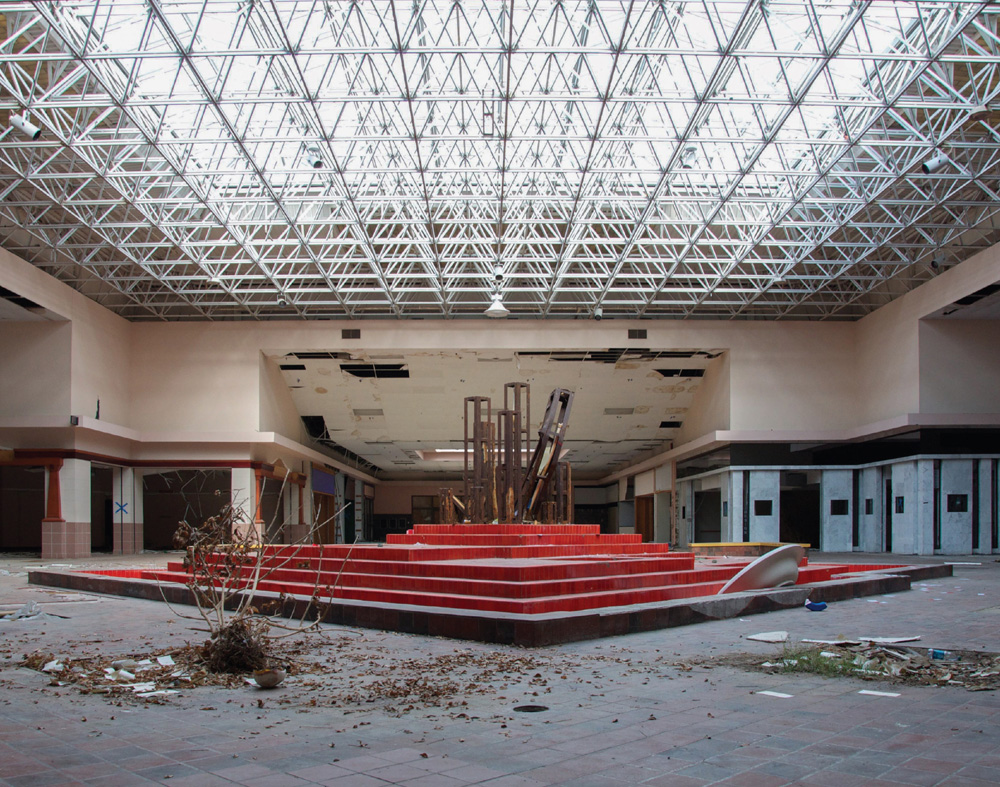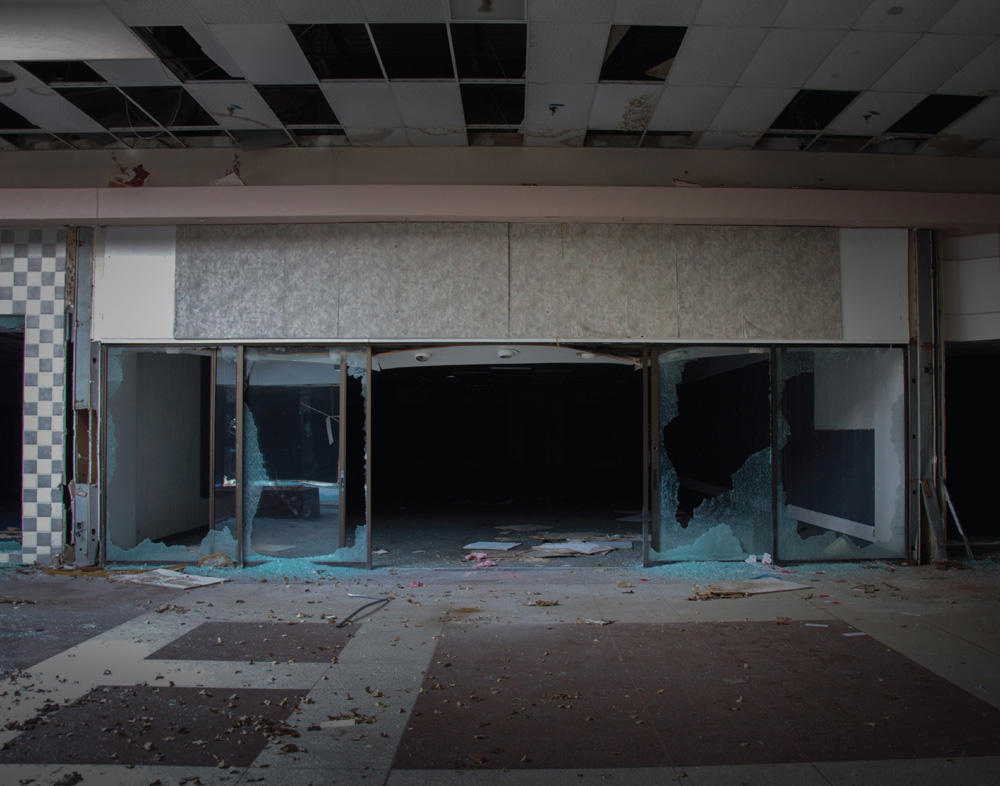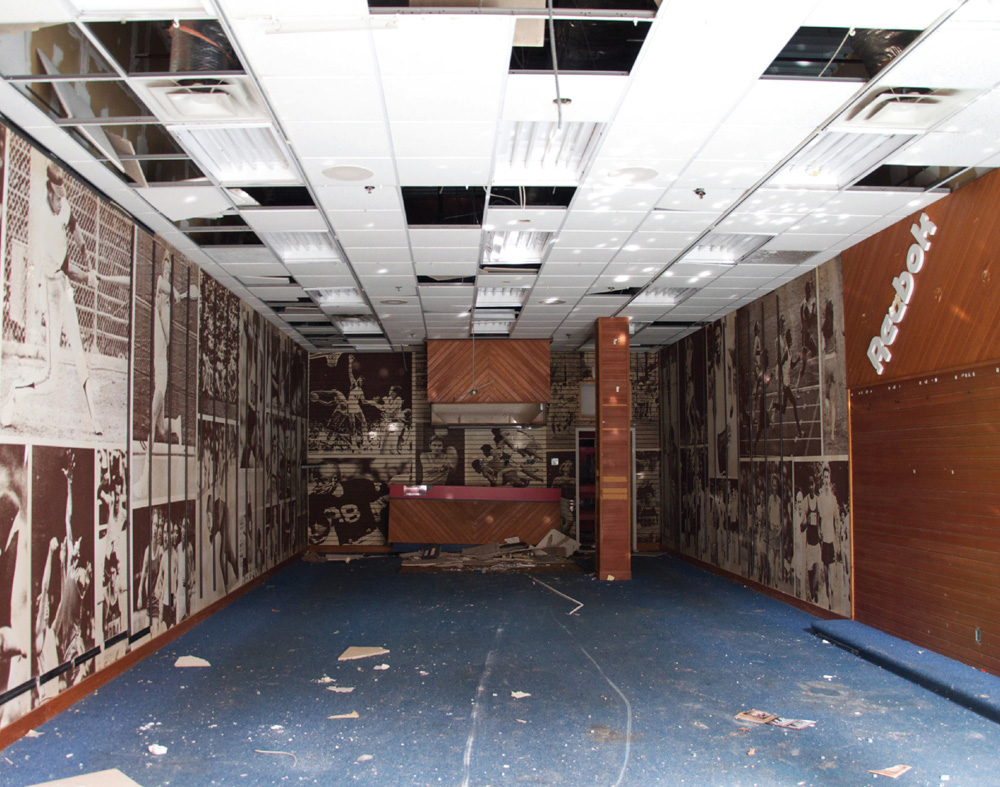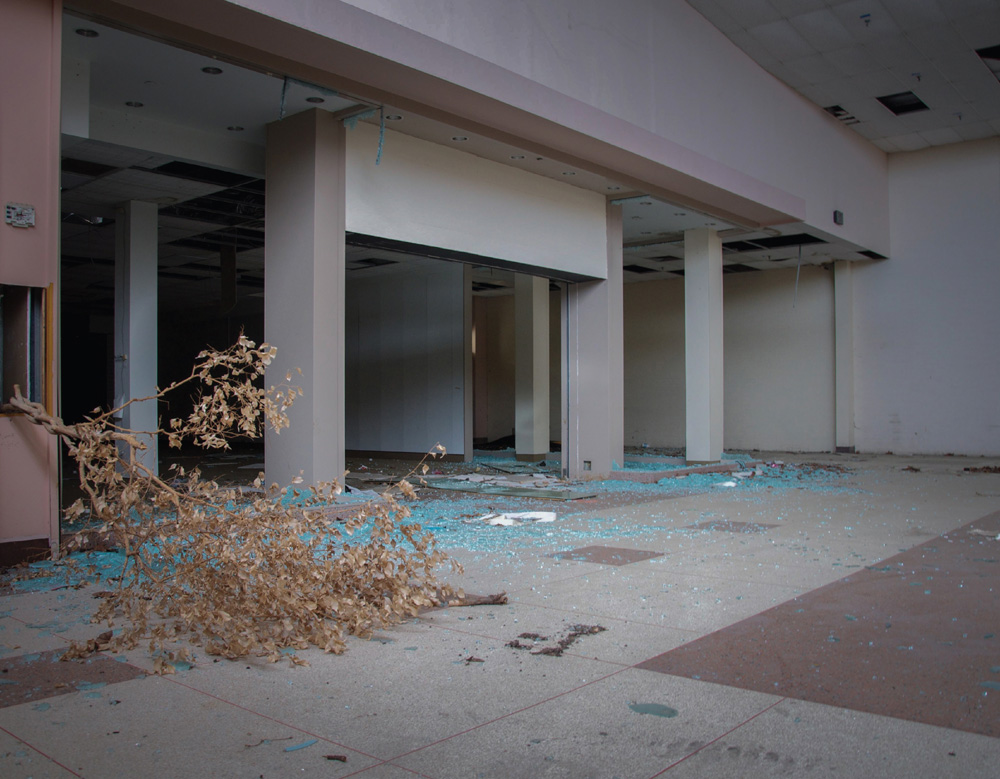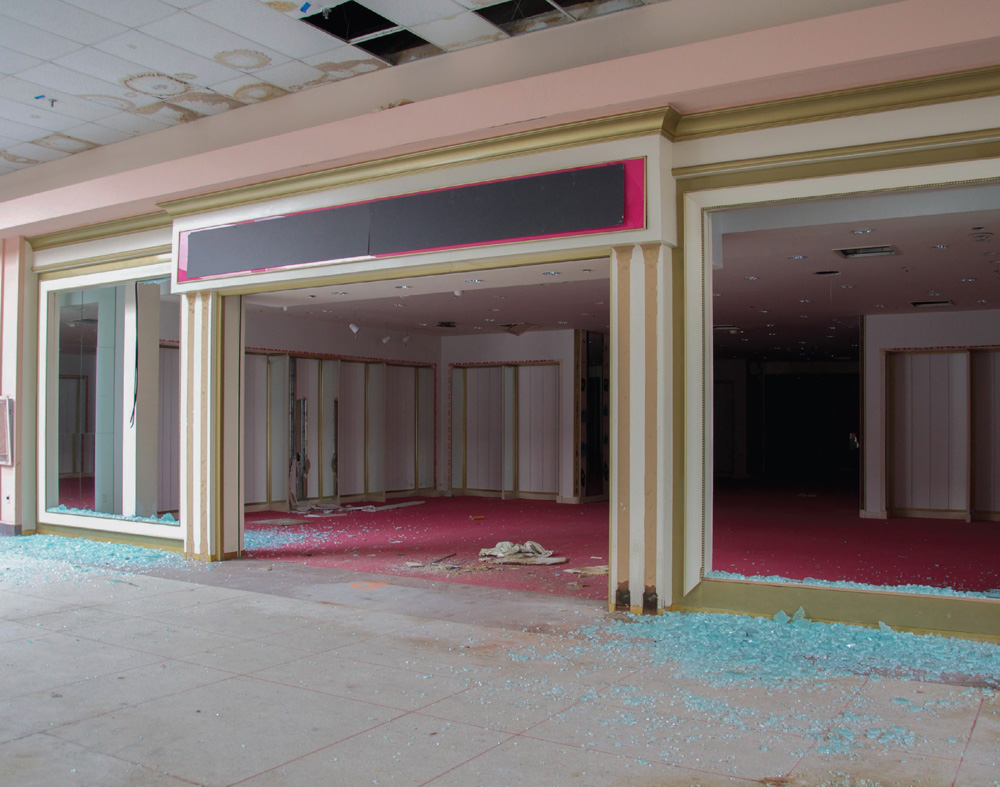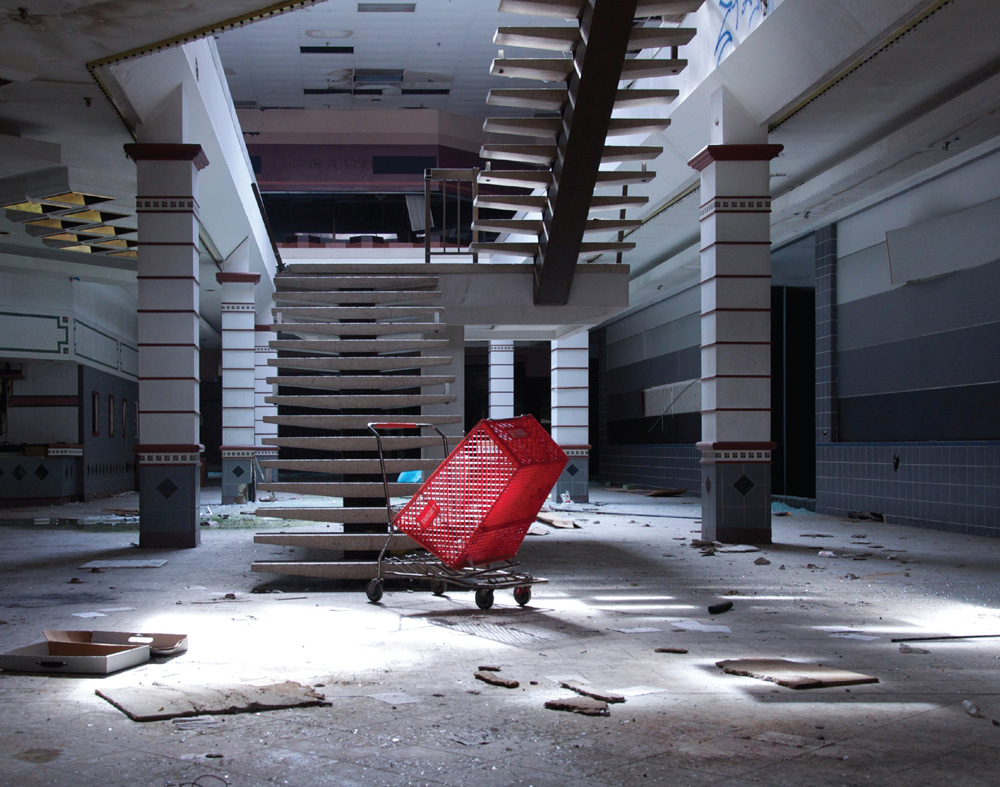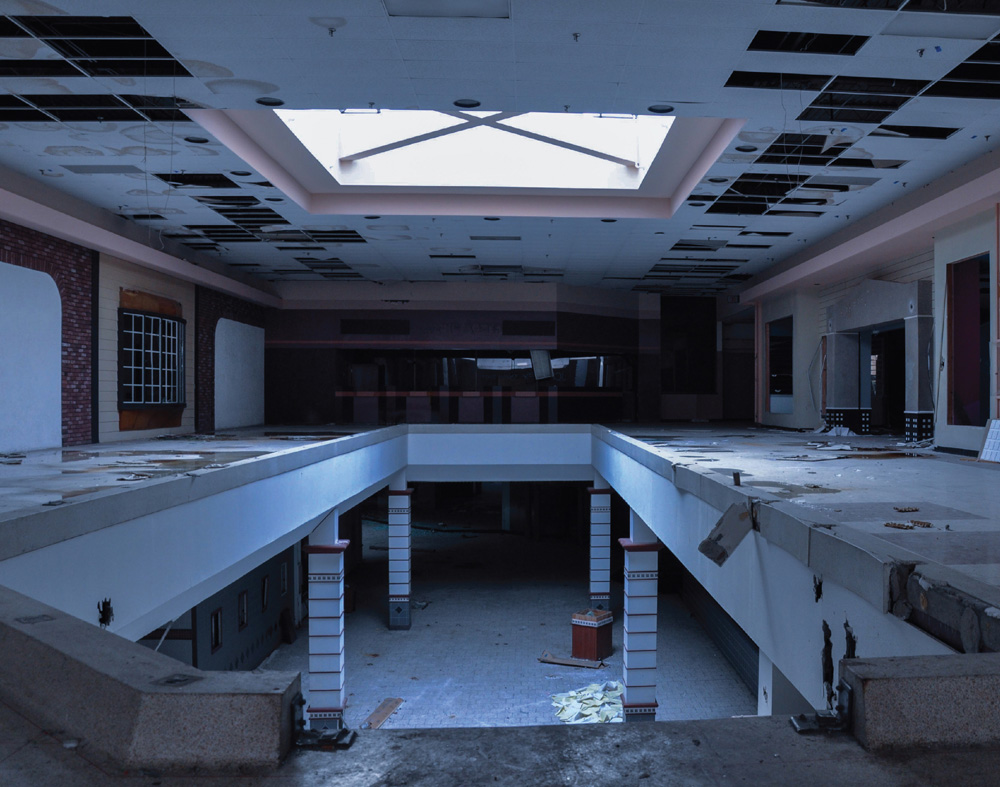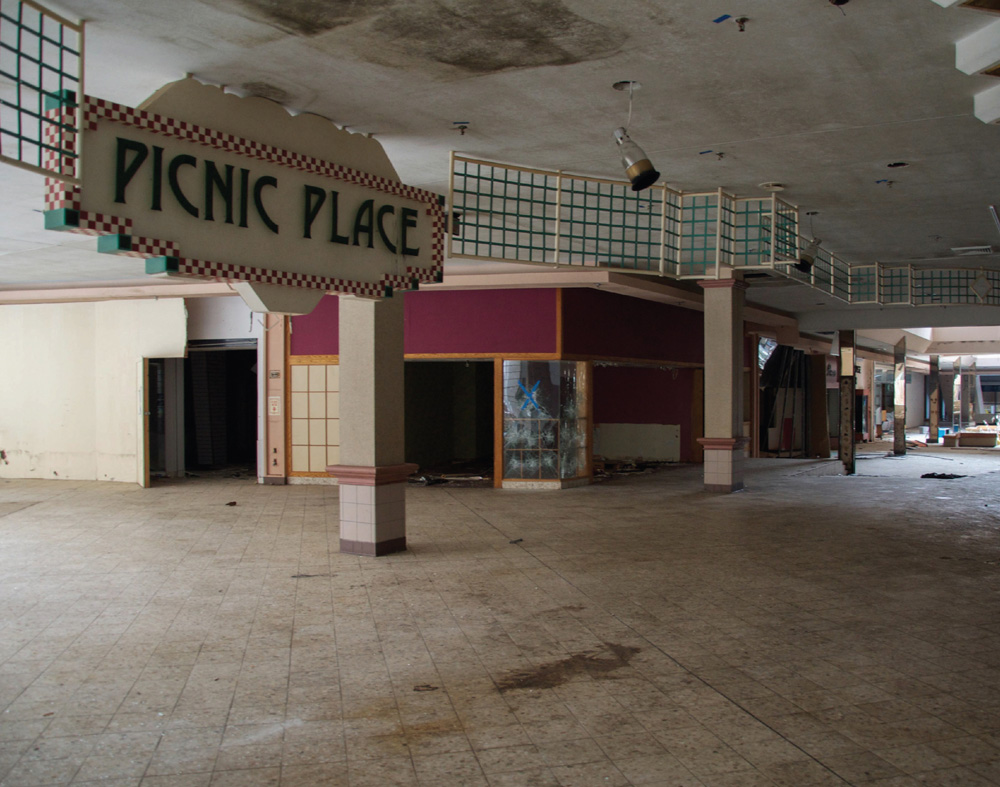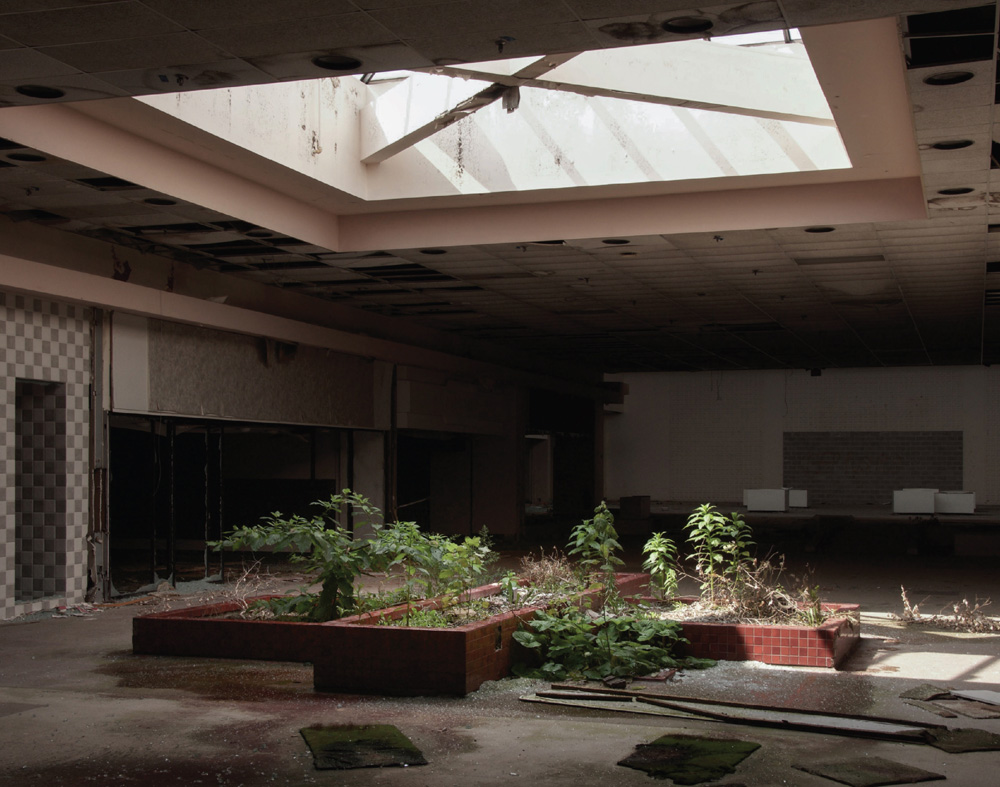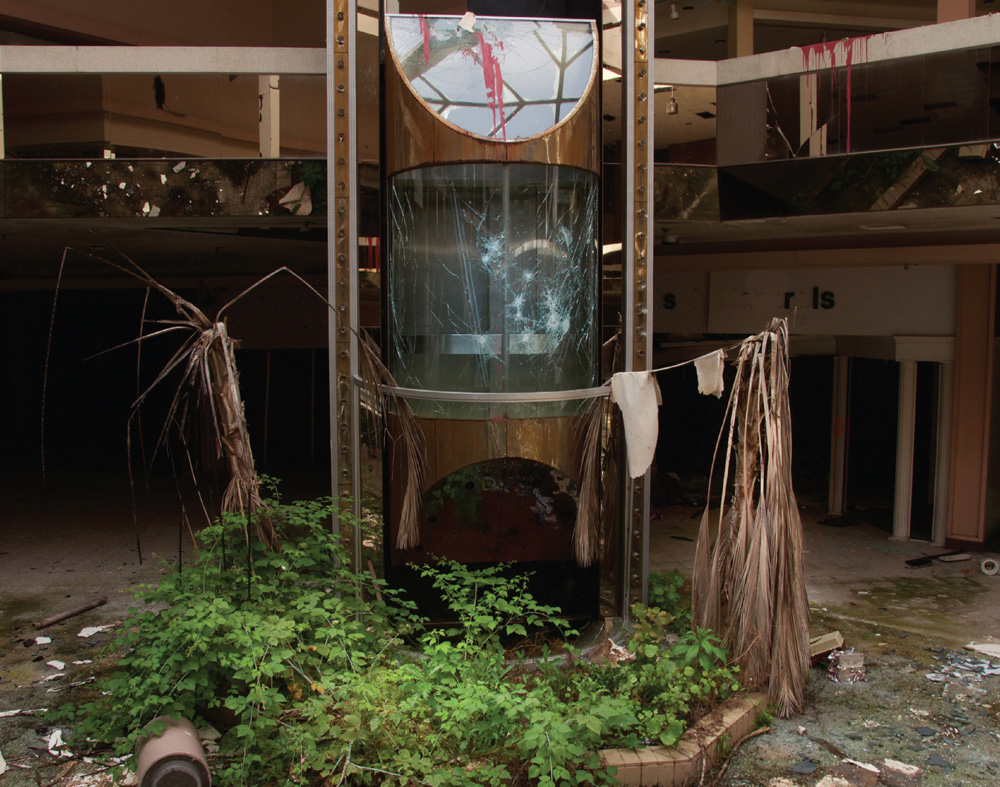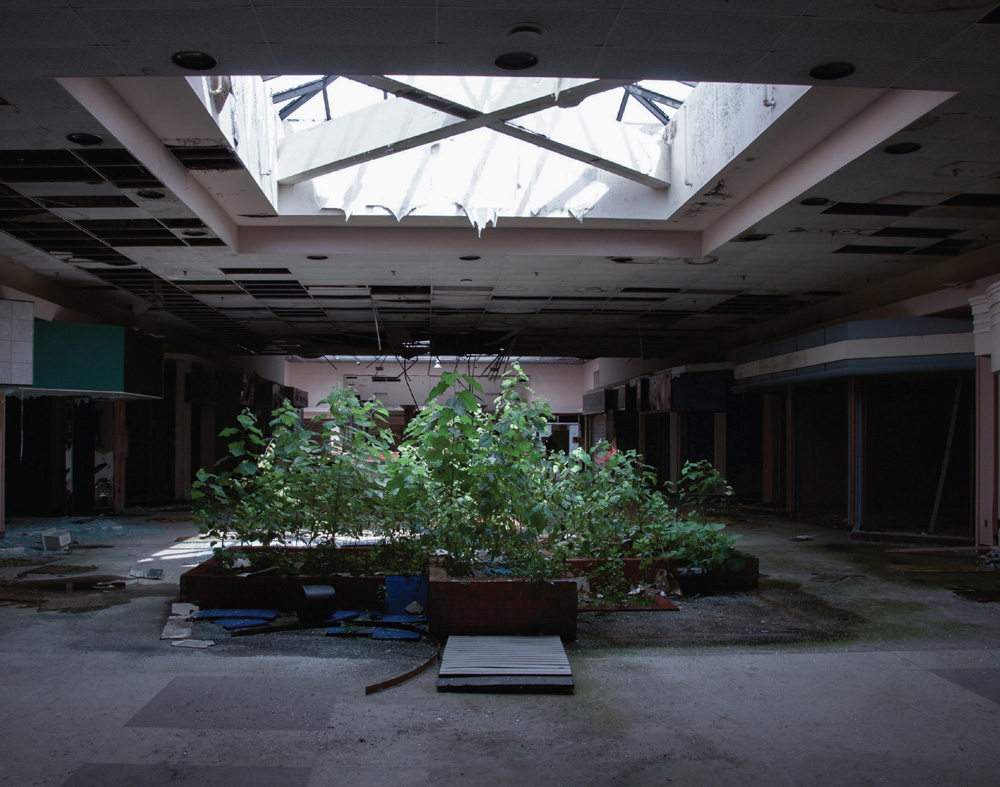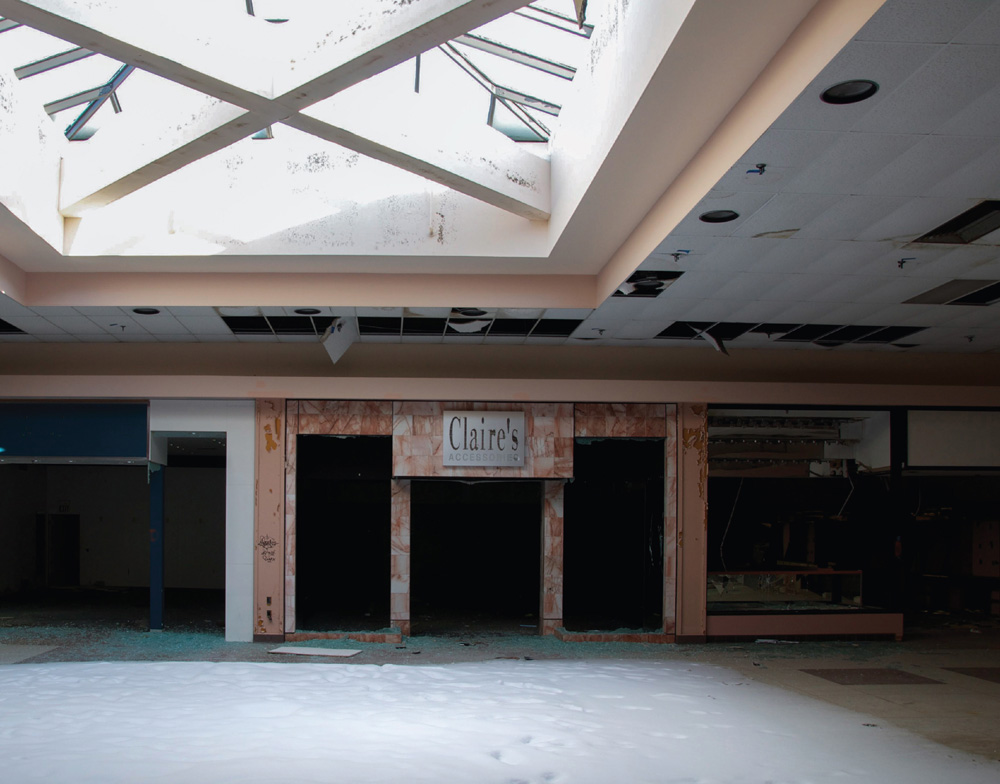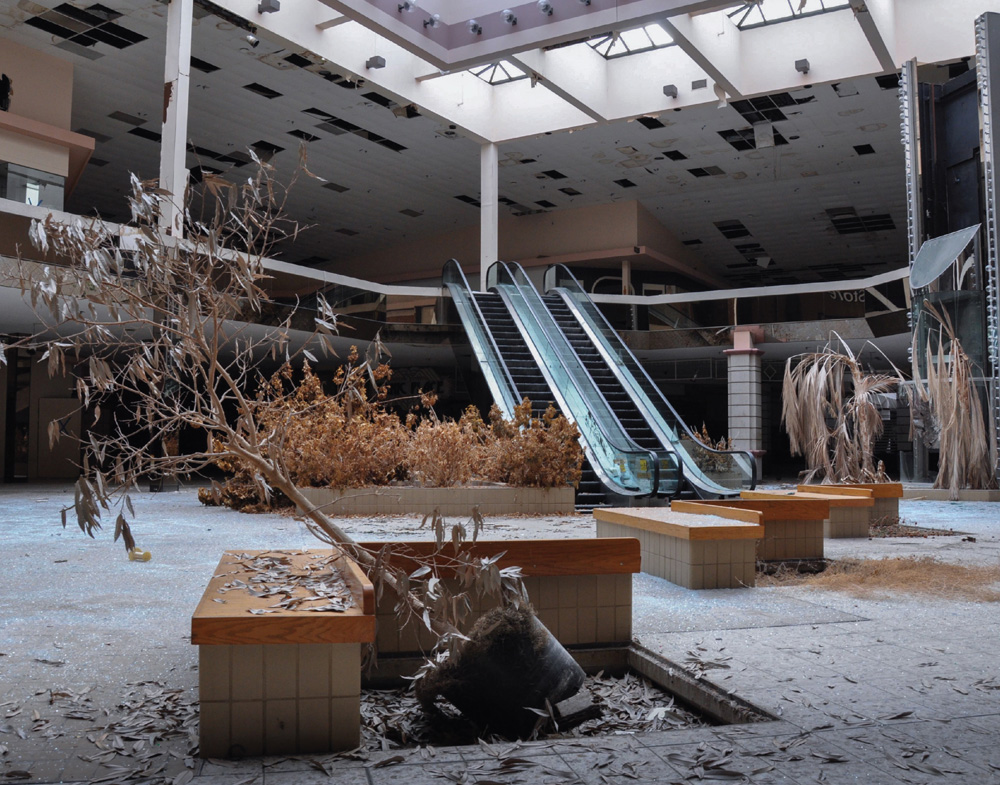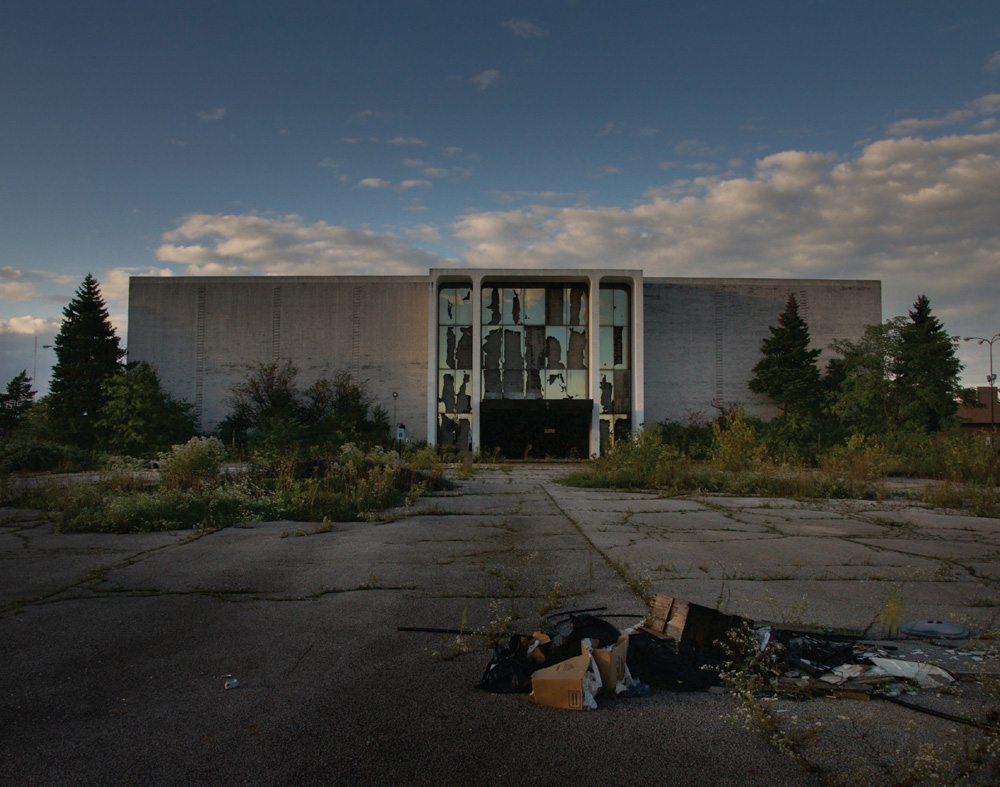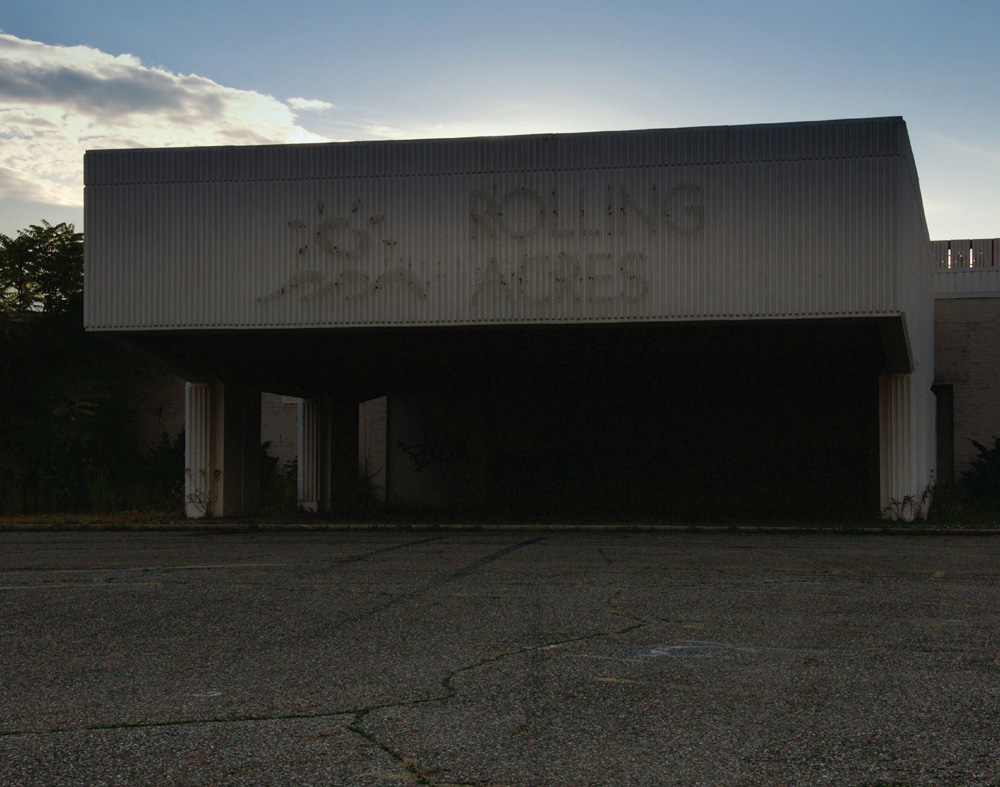

It just seemed like matter of time before it was all coming to an end.
The crown jewel for shopping in this part of Akron, Ohio was, in essence, a mausoleum filled with reminders of the once-living. All of the stores were closed, save two department stores that were once considered anchors for a mall that, for decades, had attracted crowds of shoppers, movie-goers, and diners.
At this point, these anchors—Sears and JCPenney—seemed more like the last survivors desperately hanging on to a sinking ship.
Rolling Acres Mall looked and felt like the setting for Dawn of the Dead. It was a zombie mall and the guts of it looked like they had been picked apart by zombies—or perhaps human vultures looking to snag some fixture they could unload on the street for a few bucks.
The pastel colors of the walls whispered 1980s, even though Rolling Acres had been constructed and opened—to great fanfare—a decade earlier. In its heyday, you could buy anything there, have lunch or dinner at Picnic Place, hit the movie theater or the arcade, or just wander around.
Social scientists might call that a sprawling mecca for the masses in the consumer age. My interest in Rolling Acres was less sociological and more personal.
I was returning to record an album in the city where I had once lived and where I was born—just as the mall was taking its final breaths.
My longtime friend, Patrick Carney, had asked me to jam with him in his Akron studio. No set plans; we’d just see what happens. I didn’t have any grand plans, either. My interest had as much to do with reconnecting with Akron as it did with recording an album.
There was something about this Midwestern city which had fallen on hard times after such a glorious run that resonated with me. Its sturdy resilience to keep going and churn out so much music in spite of its hardships was inspiring.
Before and after recordings, I would often drive around the city re-imagining what it looked like when I lived there years ago.
In prosperous cities on the coasts, buildings are torn down and replaced by high-end townhouses and high-tech businesses. In the Midwest and Ohio and places like Akron, things just seem to sit shuttered and closed for years.
Seeing Rolling Acres—hanging onto life, barely, with only two department stores still open—reminded me of the state of America. Those were different times: a long-gone era with a different sense of community, before the Internet and Amazon and globalism forever changed the way we shop and socialize and who we are.
It also reminded me of a different era in my life.
I was too young to remember being born in Akron, but my one year living there was among my worst. Dislocation, depression, alienation—all of that. I remember wandering around the city by myself for hours . . . a speed freak in a ghost town that was grinding away toward some slow-moving apocalypse.
Imagine a 45 single spinning on a turntable and at every turn a finger pressing down on the vinyl to slow the song to a gurgle.
Enter Rolling Acres Mall.
I remember going there during my dark year and thinking of it as some concrete-steel-and-glass utopia gone boringly wrong—from the tinny music playing in the stores to the slow-moving lollygaggers in the mall who seemed to be on Quaaludes, not Speed.
At least there was Camelot Music. And, of course, there is nostalgia—that sentimental affection for a past, even when it occurred amid a year of darkness.
My return to Akron to record with Patrick took place amid this backdrop. The idea that I was returning to a place that I had lived in and left and was always somehow fascinated with informed everything.
It also inspired a full-length album, written on the spot, called Akron, Ohio. It opens with the line that underscored my obsession with returning to a place so familiar yet far away: “I just landed here, but it feels like a year ago, your skyline looks the same, but the lights have changed.”
The lights ended up going out on the two department stores at Rolling Acres in 2013. That’s when the mall went off the respirator and died. It lingered on as a debris-filled tomb until it was demolished in 2017.
The story of Rolling Acres is like hundreds of malls around the country in places like Akron, where signifiers of wealth and prosperity are now reminders of a time that is good as gone.
But Seph Lawless’ photos of the abandoned Rolling Acres Mall speak deeply to me on many levels and stoke many contradictory feelings. I was once in this place when it was a shiny jewel ready-made for shopping. And yet I felt as destroyed and abandoned back then as the place looked when I returned to Akron to record.
You could call that a ghost that conjures mixed memories or that slightly painful thrill you get when you jiggle a loose tooth with your tongue. I’m not sure which it is . . . either way, it resonates.
—John Petkovic (Writer and musician who plays in Sweet Apple,
Cobra Verde, and Death of Samantha. His most recent project,
with Patrick Carney, is called Sad Planets.)
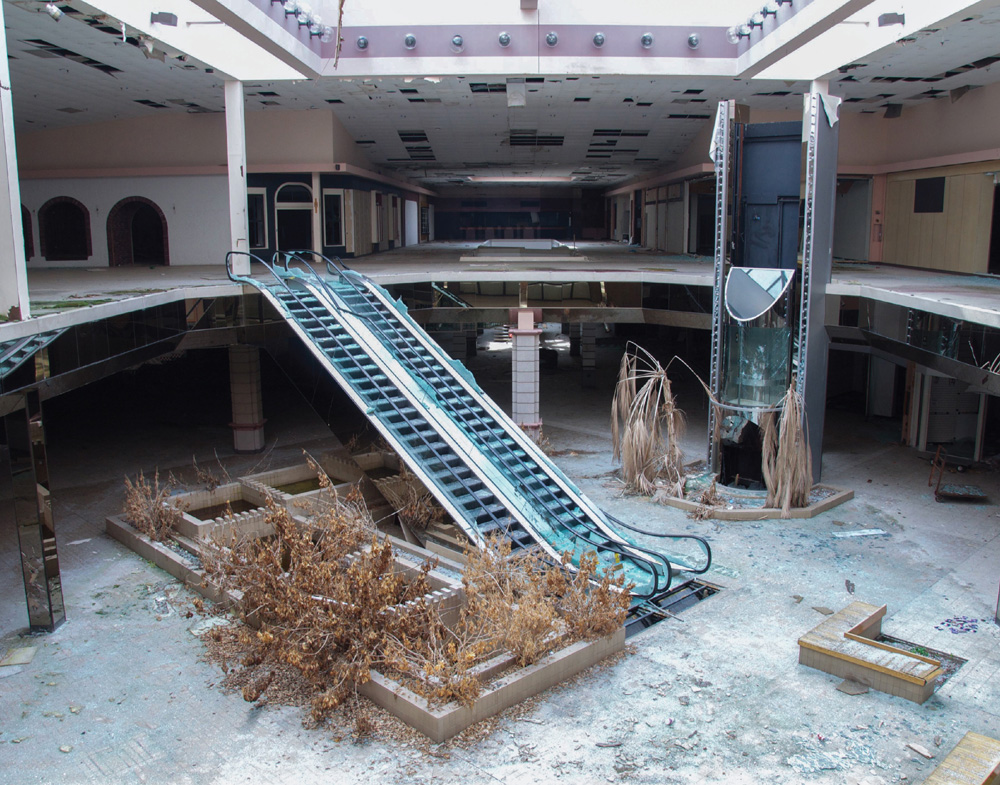
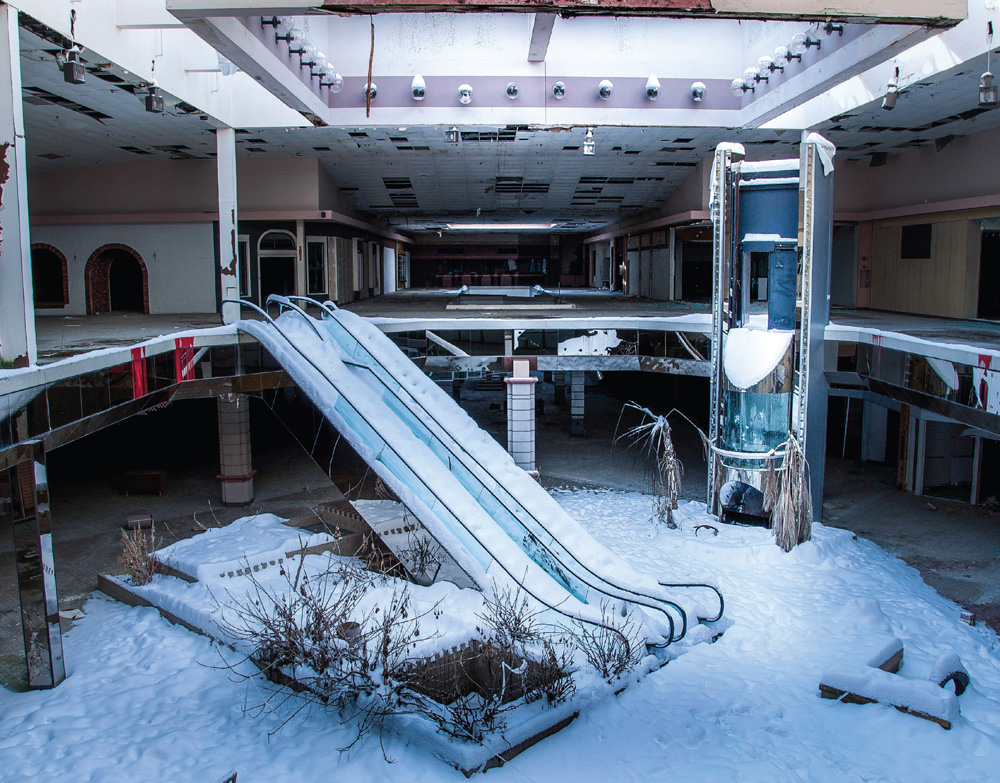

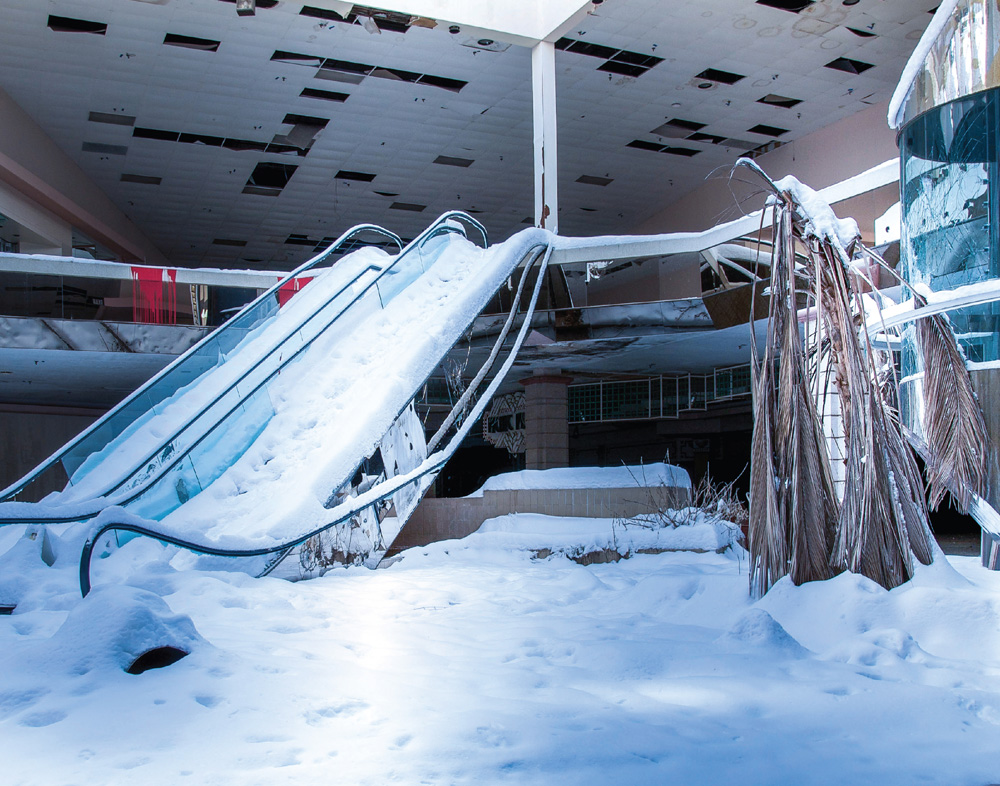
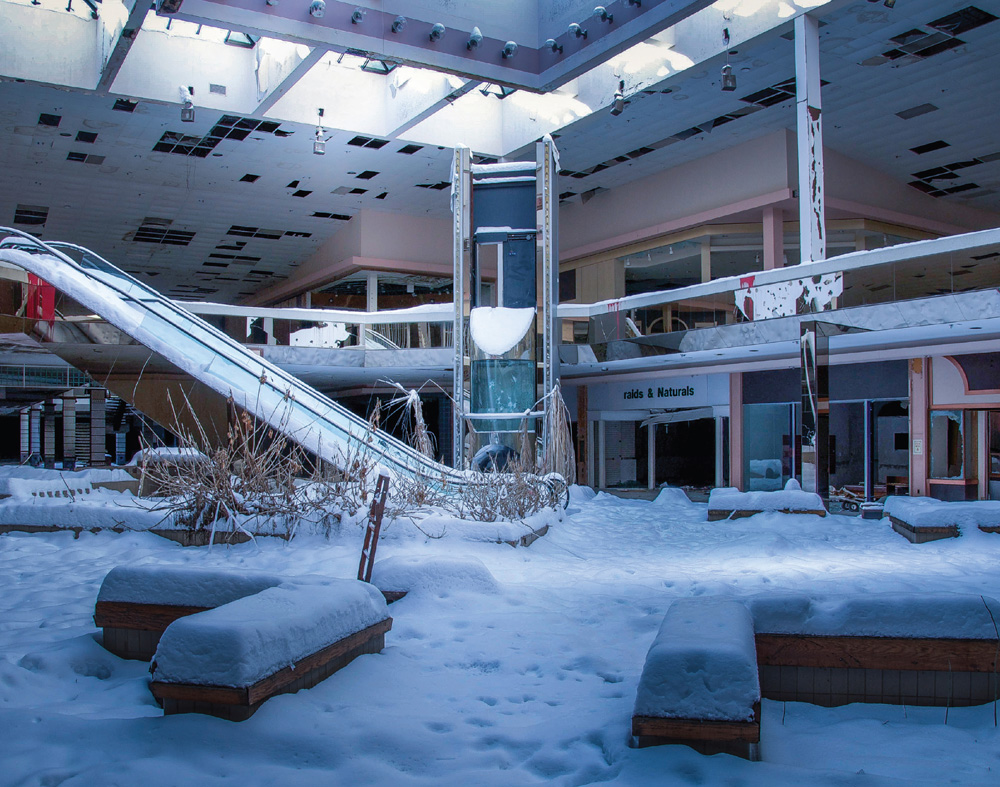
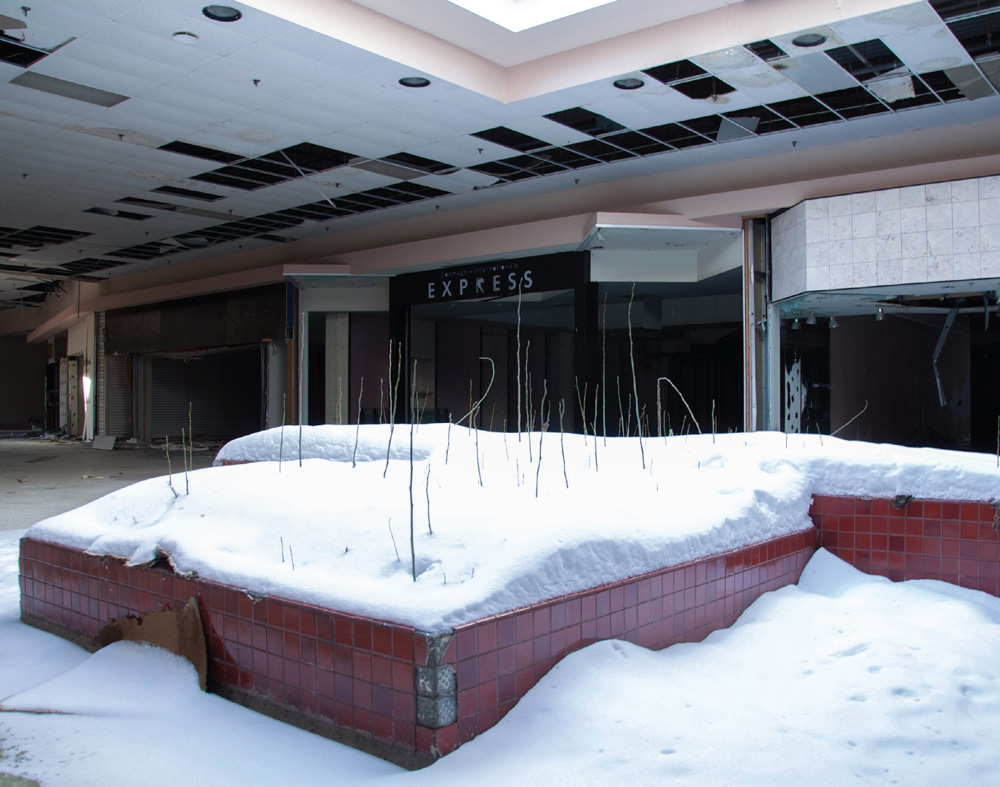
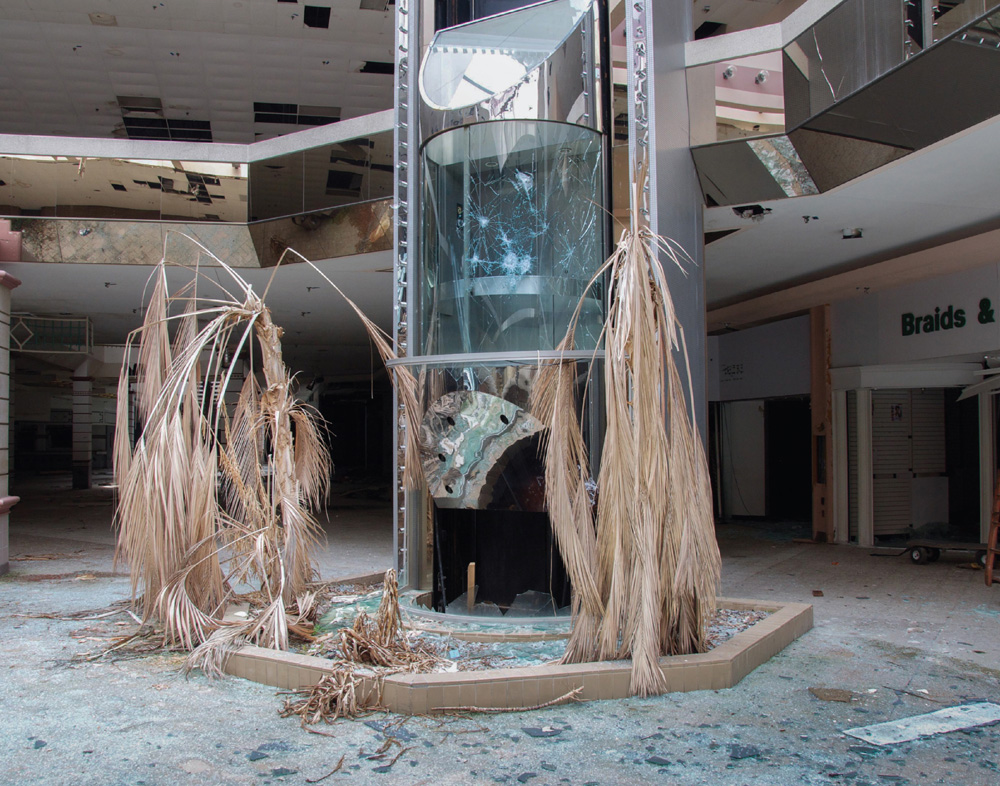
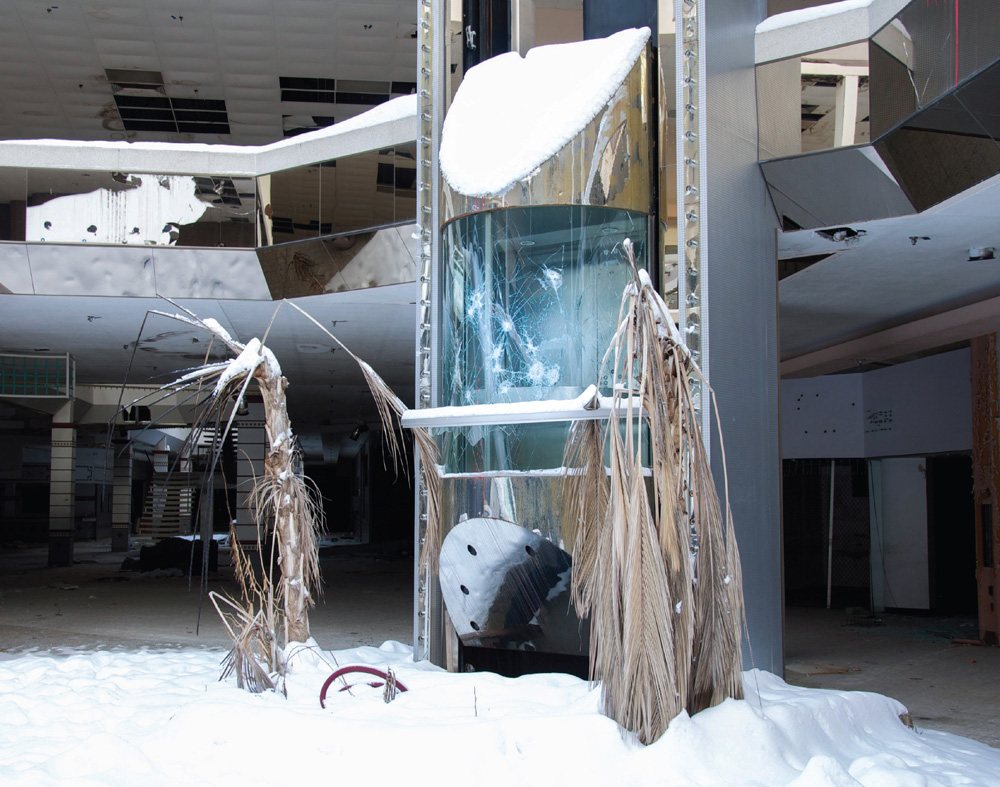
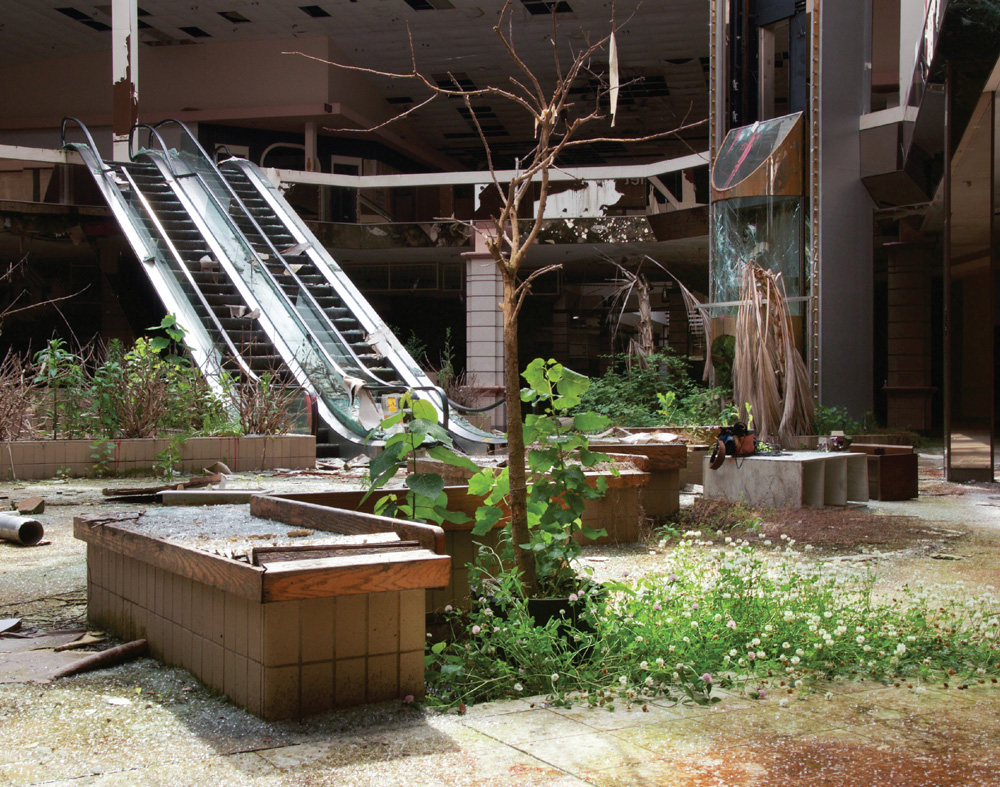
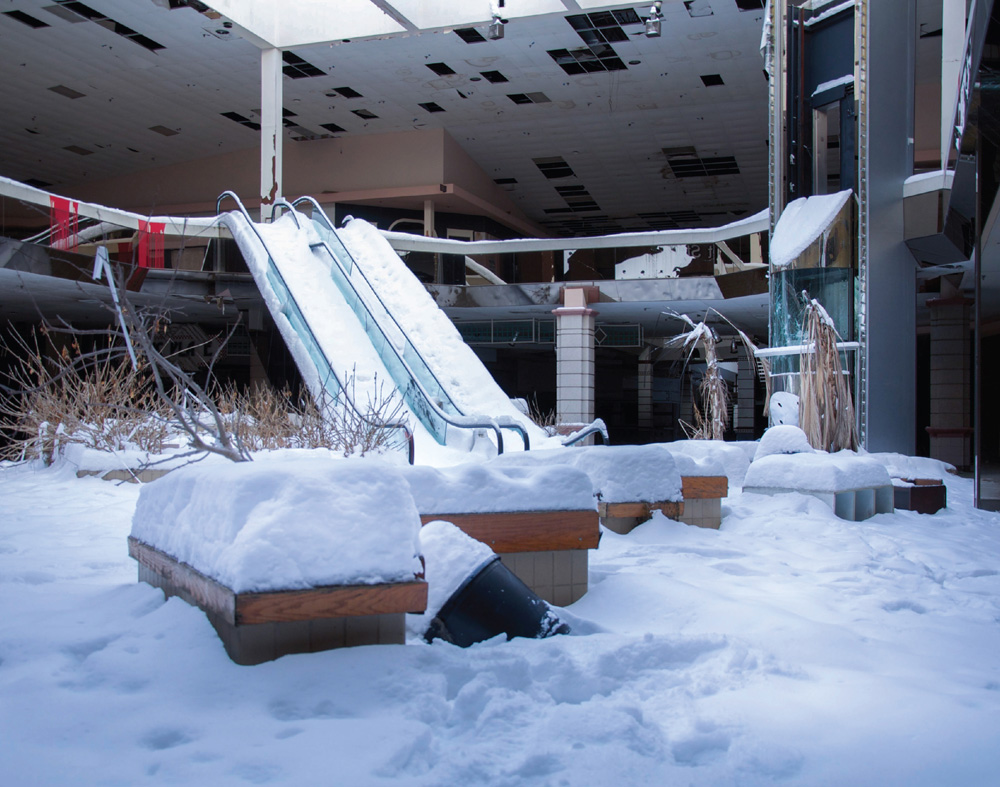
A growing number of malls in the United States are now lying in ruins, having closed down after years of declining retail traffic. In 2016, I took a look inside an abandoned mall with photojournalist Seph Lawless, who has made a career out of documenting these lost and abandoned American tombs of consumerism.
We headed to Rolling Acres Mall in Ohio, a place Seph remembers visiting as a kid and one of the first malls he ever photographed. Once inside, I noticed that the glass on all the stores was smashed, as if people had tried to get inside.
As Americans increasingly take their shopping online and teens turn from brick and mortar hangouts to social media sites, malls are being left behind, with over two dozen abandoned over the past four years. Fifteen percent of US malls with lower-end stores will fail within the next ten years.
—Ronan Farrow (New Yorker; NBC News)
